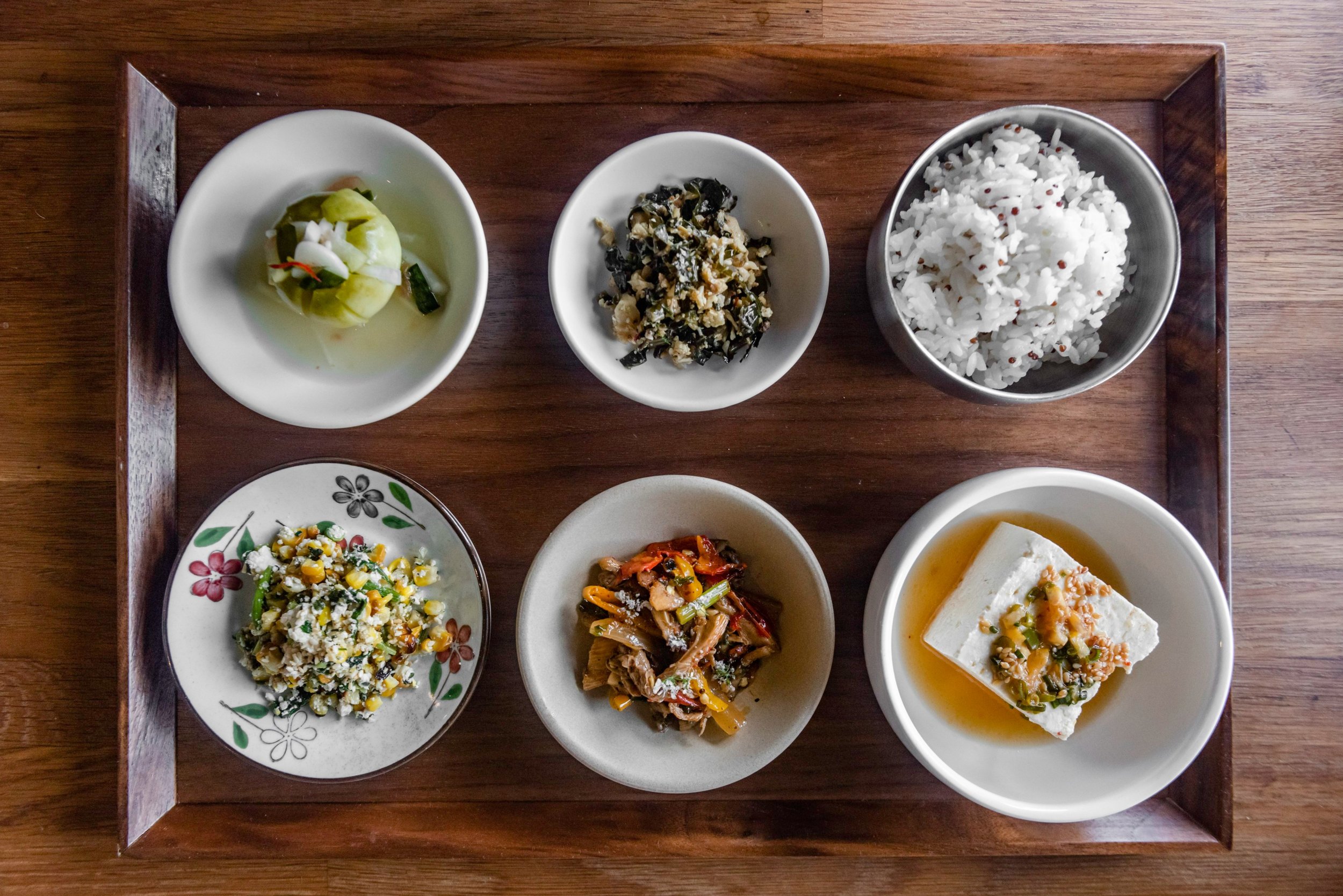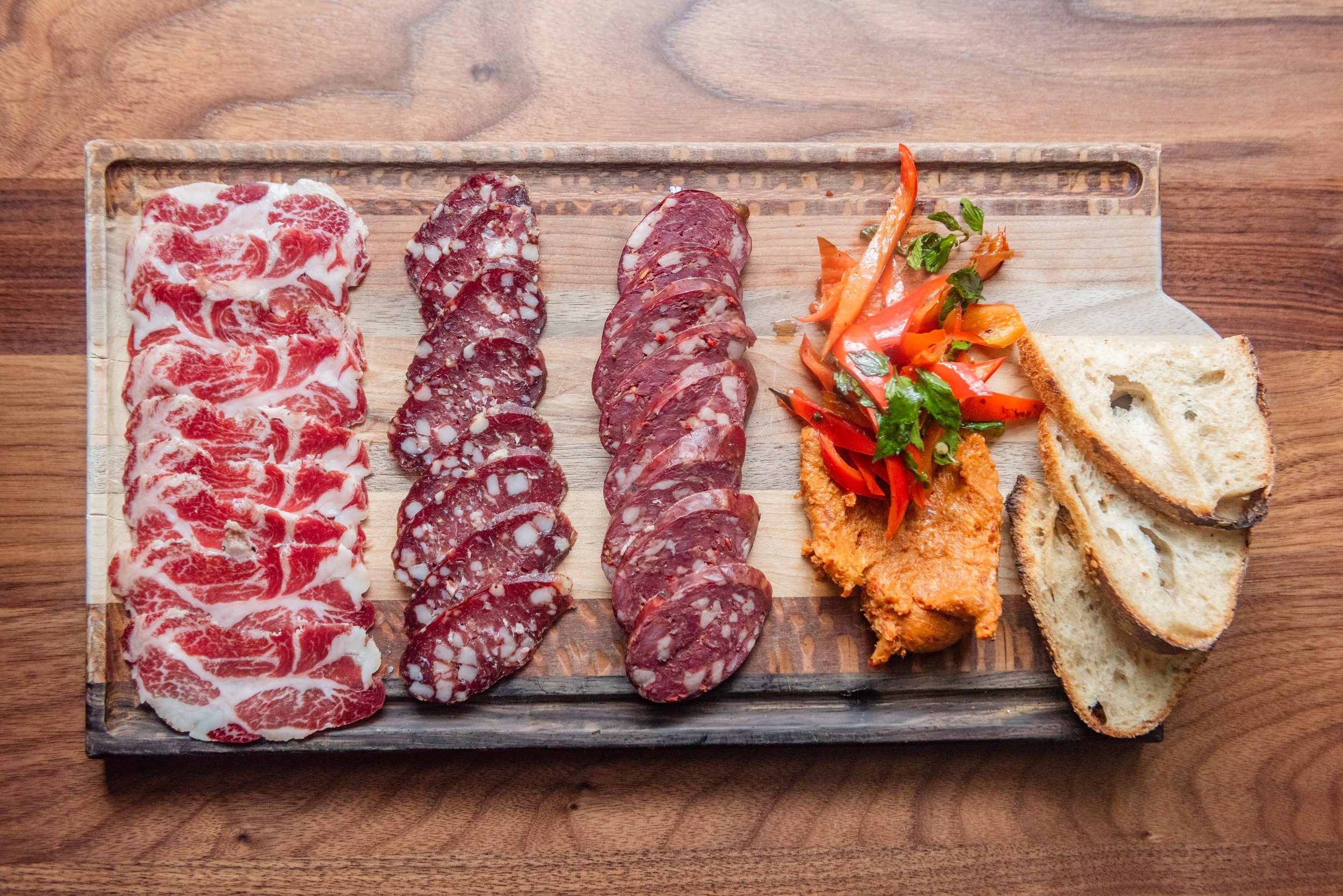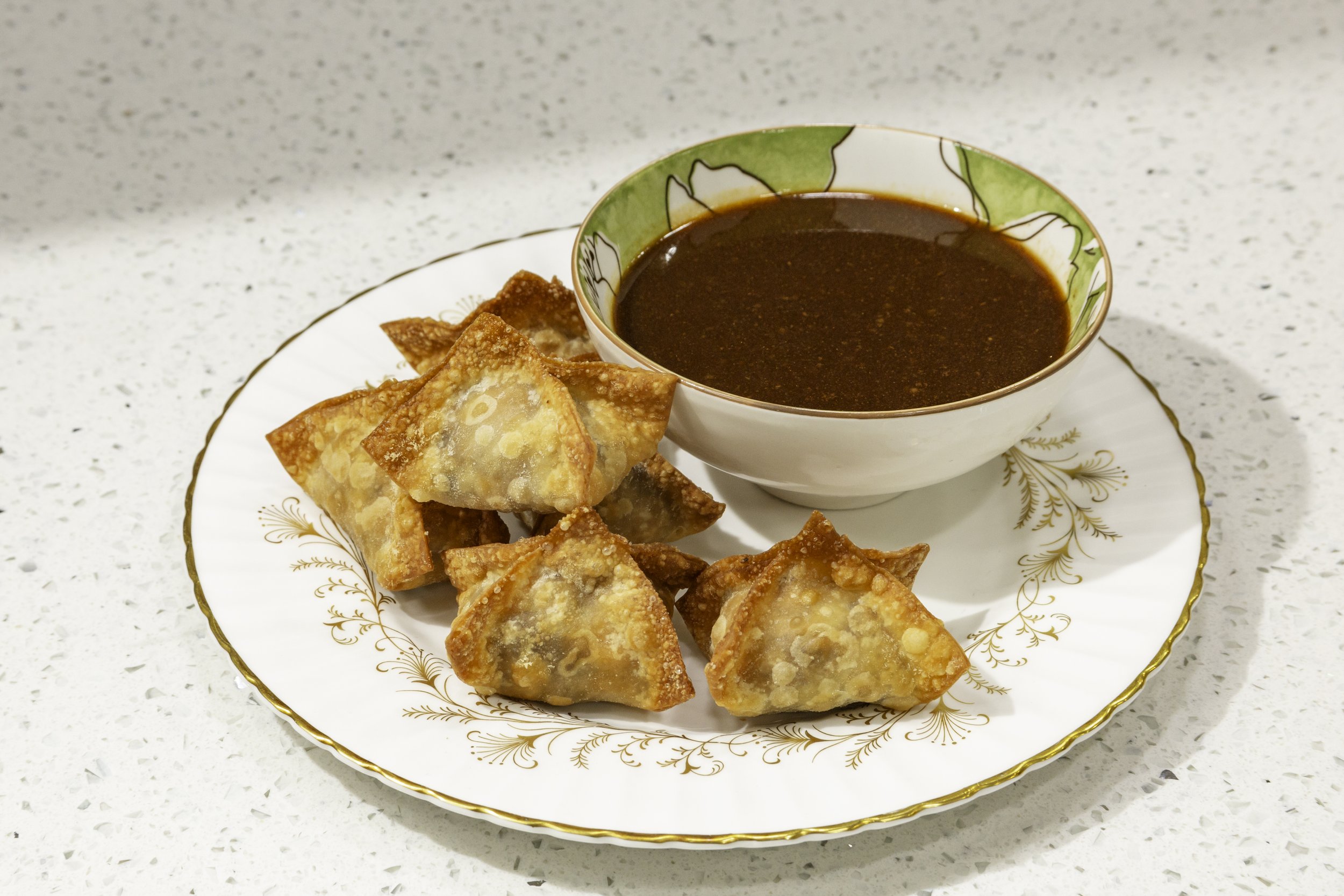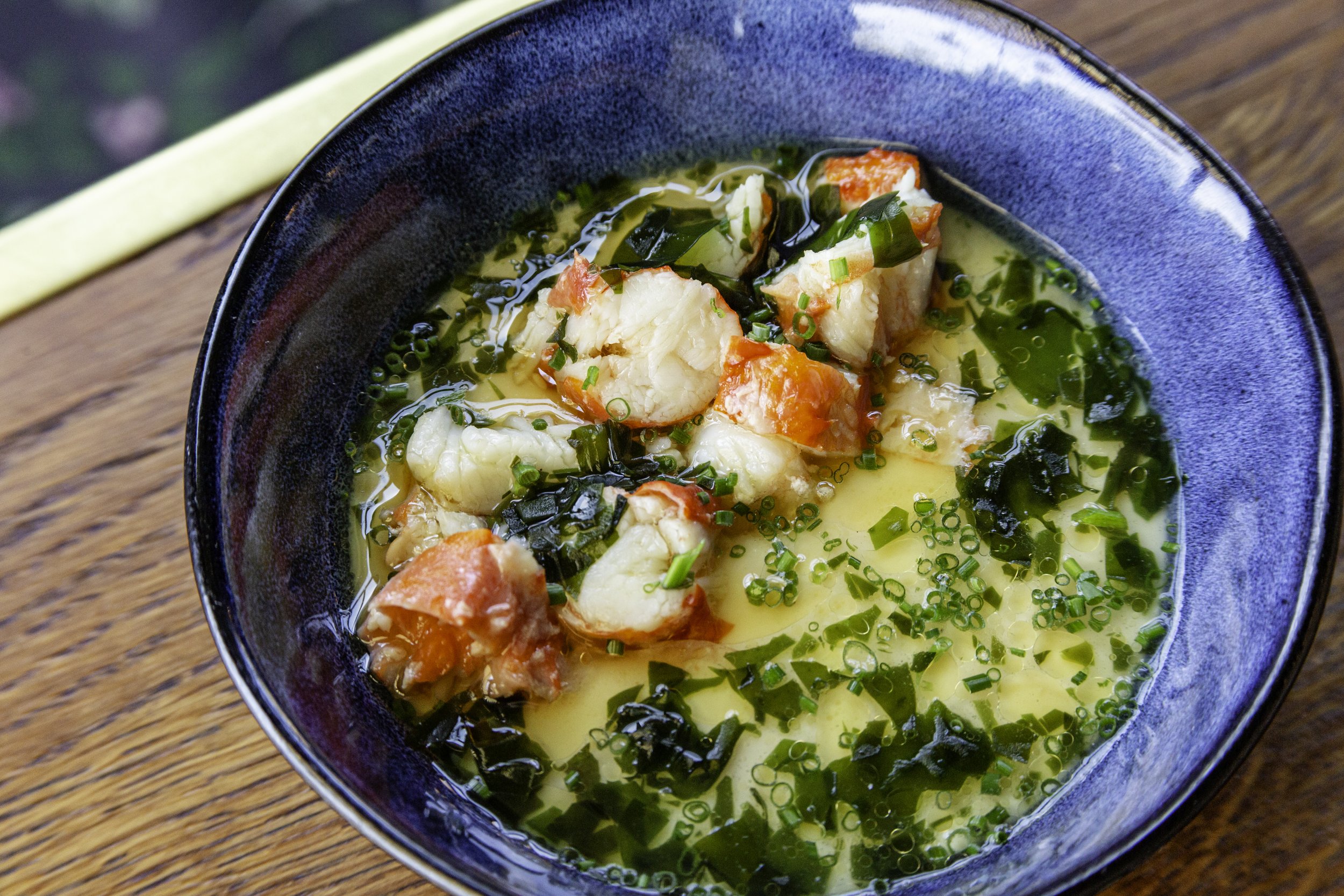Bay Area Banchan
Chef Steve Joo’s banchan set features fresh tofu accompanied by market-driven flavors at Jooboodoo.
photos: will blunt
“[Making banchan] is time consuming and labor intensive, it is a way of communicating love and care. It’s what Korean moms make for their children,” says Steve Joo of the Oakland tofu and banchan concept, Joodooboo. Joo, a Chez Panisse alum, adds a California ethos, making seasonal, market-driven banchan and other plated dishes utilizing classic Korean flavors and techniques. The banchan at Joodooboo are typically served alongside Joo’s lunch plates and bowls, although many customers opt to buy more. “Often folks will come in for the first time, sit down with a meal, and before they finish will ask for a small container of this and that,” says Joo. “Having that aspect of taking it home, it’s that extra sale that’s already marketed by what’s on the tray. Restaurants always talk about selling that extra cocktail, but this is how we’ve been doing it so far.” Made to complement Joo’s silky, flavorful tofu (which he spent over a year in Korea mastering), his banchan set is a model of harmonious flavors and textures powered by seasonal ingredients.
Sweet Corn Dooboo Muchim
In Korean, muchim means to season, or to stain, and Joo interprets his as greens seasoned with tofu. Looking to show summer sweet corn in a different way, Joo slow-broils the ears, giving the kernels a chewier texture and nuttier flavor. He mixes in fresh purslane and chrysanthemum, blanched amaranth greens and parsley, and seasons the mixture with sesame oil, black pepper, pounded raw garlic, and scallion greens. Joo makes a dooboo sauce with pressed tofu, garlic purée, pounded sesame, macerated scallion whites, and brown rice vinegar, and tosses the vegetables in the sauce.
Green Tomato Kimchi
Utilizing a water kimchi style, where the brine is just as integral to the experience as the fermented vegetables, Joo cores and scores green Early Girl tomatoes, then brines them overnight in a 5% salt solution. Once they’re drained, the tomatoes are stuffed with garlic chives, scallions, garlic, ginger, spring onions, serrano and fresno chiles, salted watermelon rinds, and rice slurry. The tomatoes are fermented in a mild brine for two to four days (depending on the temperature and humidity) for a clean, slurpable, and chewable kimchi.
Rice Thief
A rice thief is any banchan that’s seasoned specifically to make the eater crave rice. Joo’s has a base of roasted cauliflower and blanched and roasted kale. The mixture is seasoned with a punchy combination of fried garlic, dried mushrooms, ginger, chiles, and fish sauce. Once tossed together, Joo finishes the rice thief with scallion greens, olive oil, and vinegar, leaving the eater hunting for a bowl of white rice.
Fried Mushrooms and Peppers
Showcasing beautiful mid-summer produce was a priority for Joo, and when he saw the Jimmy Nardello peppers in August, he knew they would find a place on his banchan set. He starts by searing the peppers on a flat-top, then oven-roasts them with sherry vinegar. The set is finished with wok-fried oyster mushrooms and spring onions, and seasoned with a mixture of pounded garlic and toasted perilla seeds.
Rice
“Banchan basically means stuff to go with rice, to go with your meal, so it would feel silly without rice,” says Joo. He adds a handful of quinoa grains to his bowl of third-generation Koda Farms rice, who are California’s oldest rice farmers.
Dooboo
At the heart of Joo’s business is the tofu, or dooboo, that he makes in house every day. Starting with dry soybeans, Joo’s unpressed tofu serves as a creamy, nutritious protein—a textural foil to the rest of the banchan set. Seasoned lightly with a mixture of sesame seeds, sesame oil, soy sauce, Meyer lemon, ginger, and scallions, the dooboo complements the diverse flavors and textures of the banchan set.













